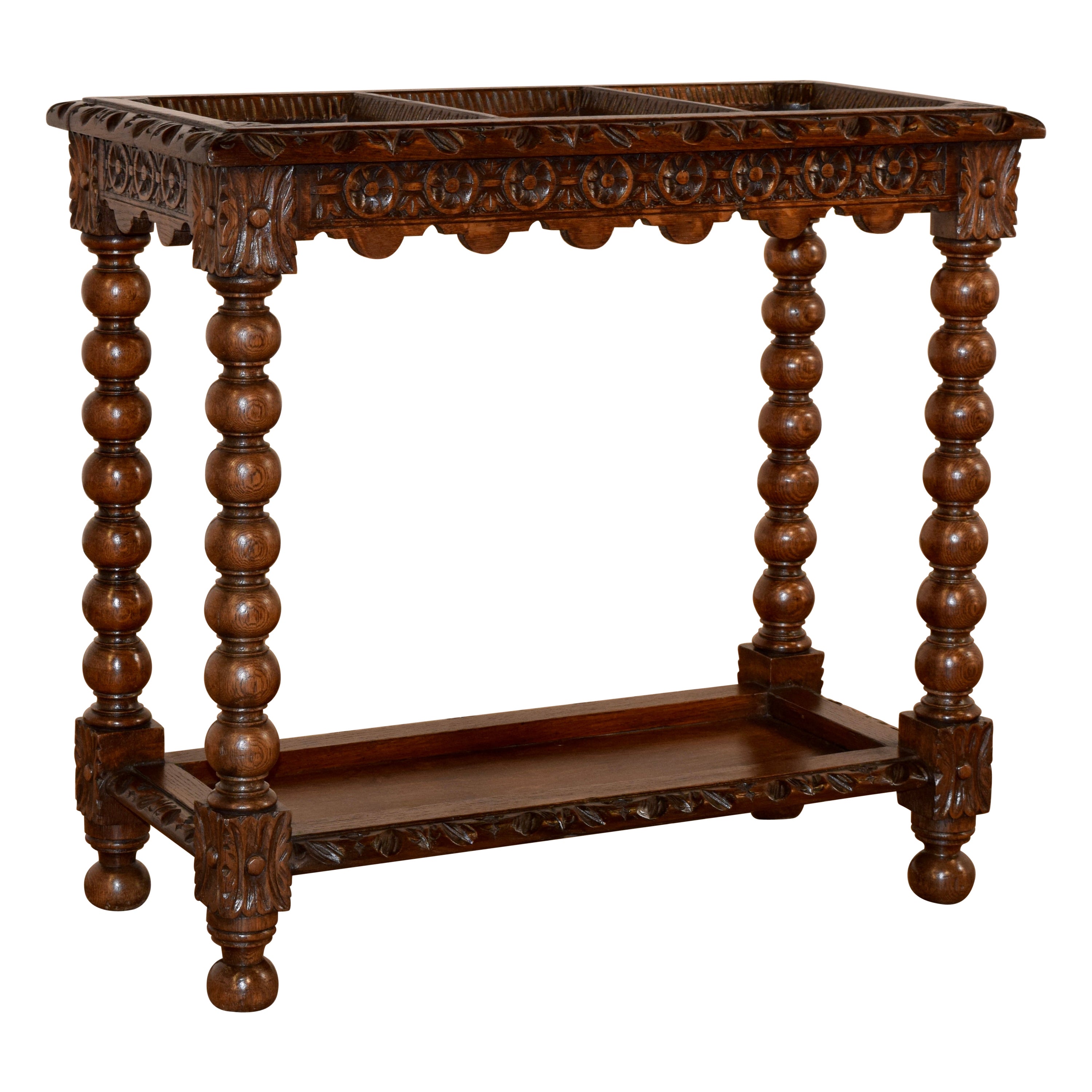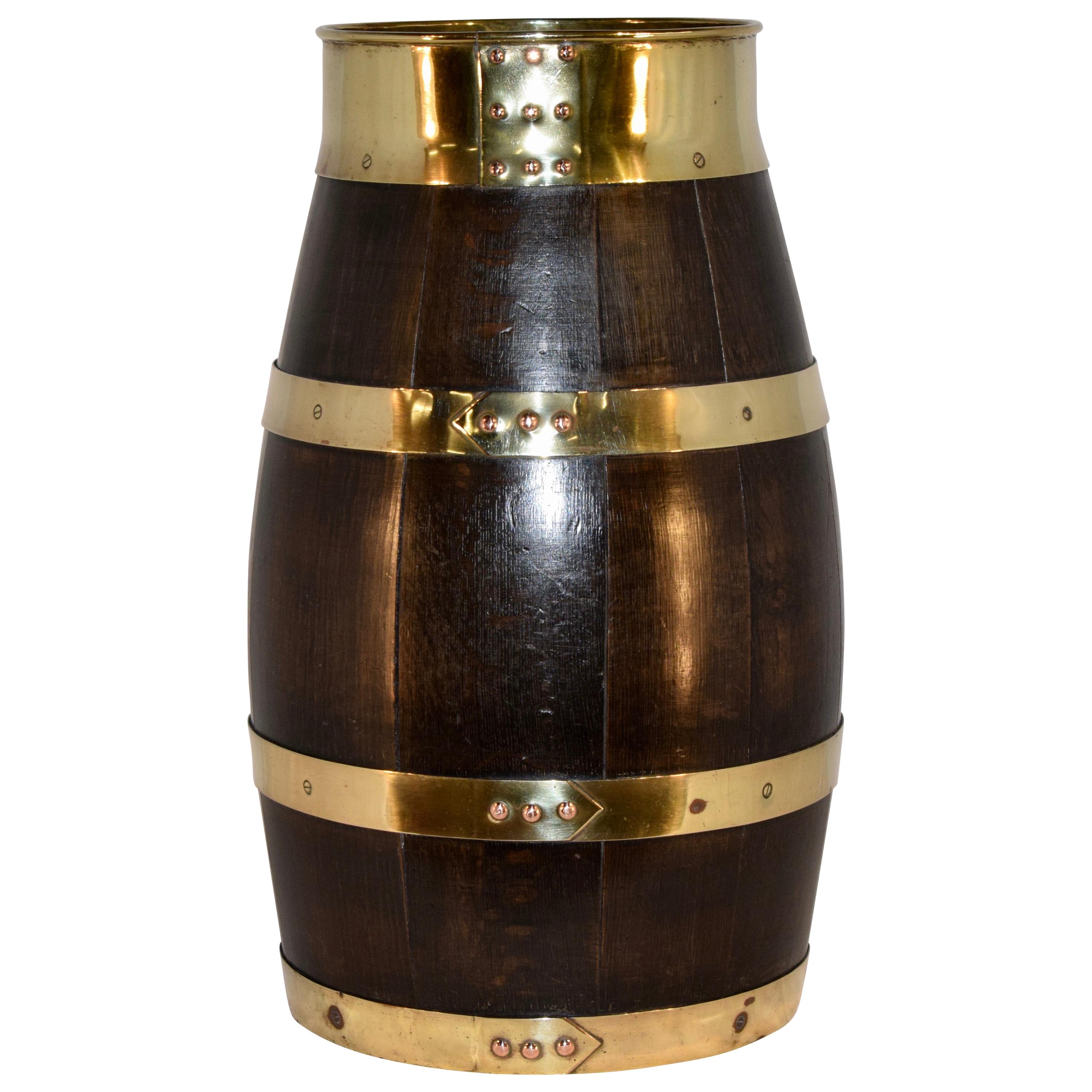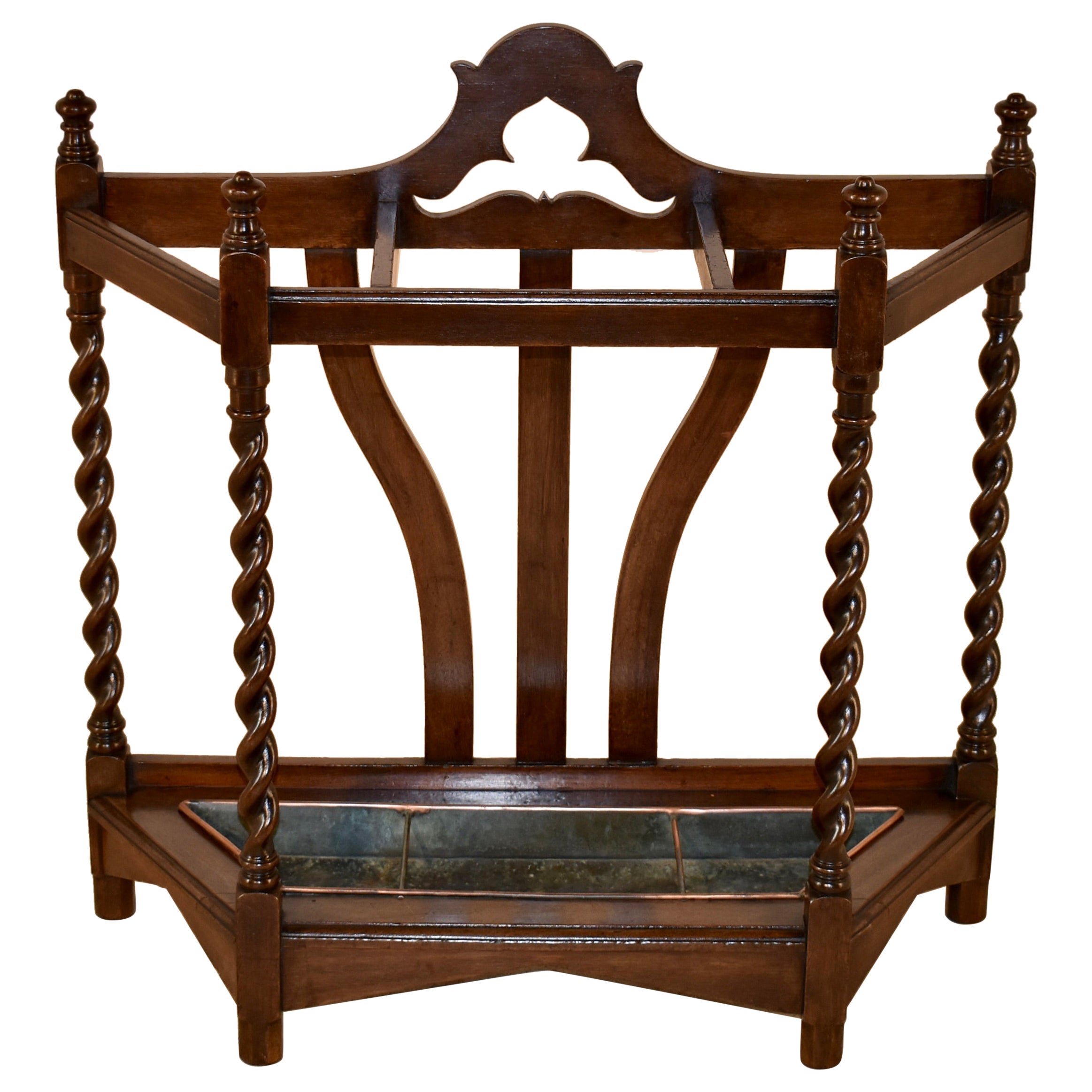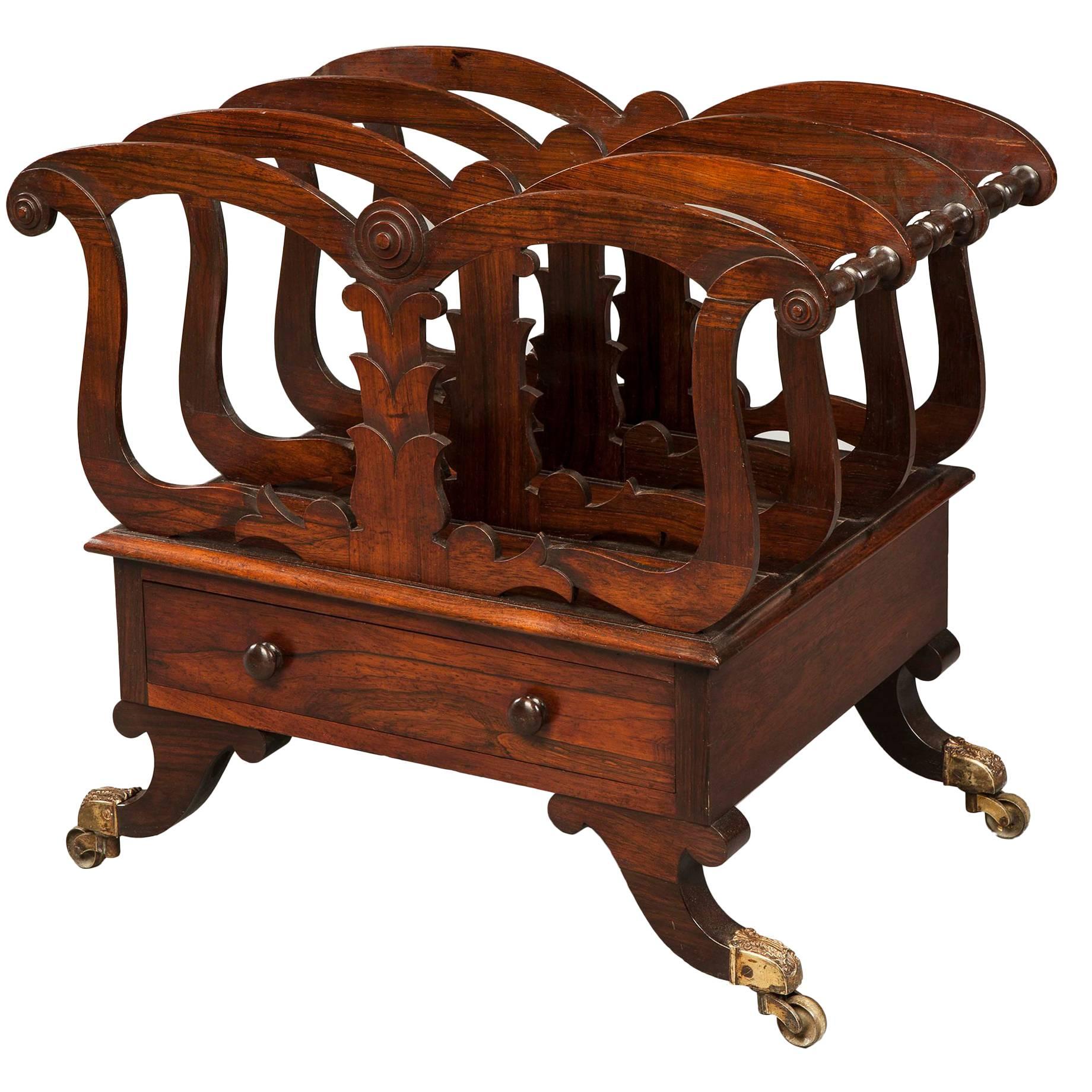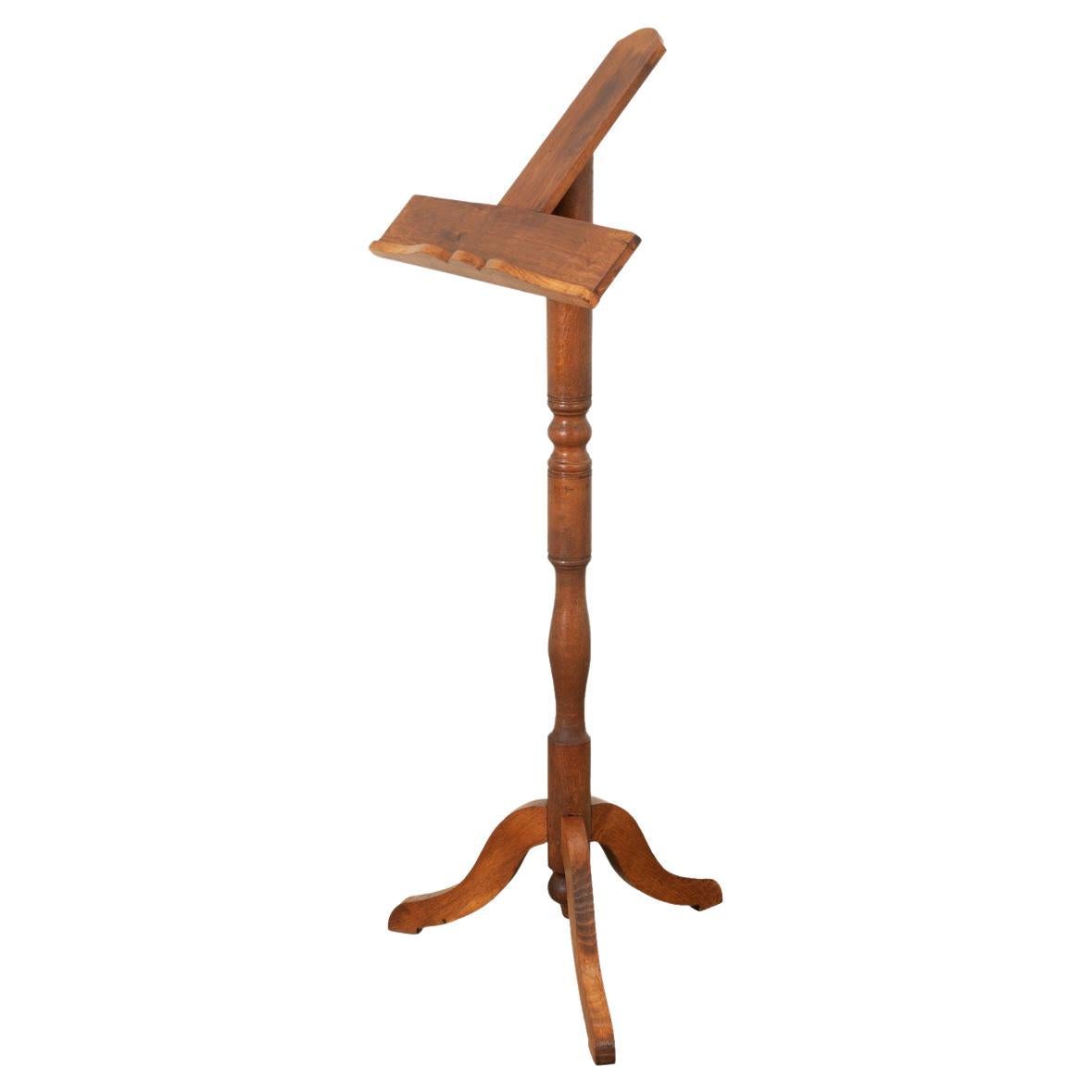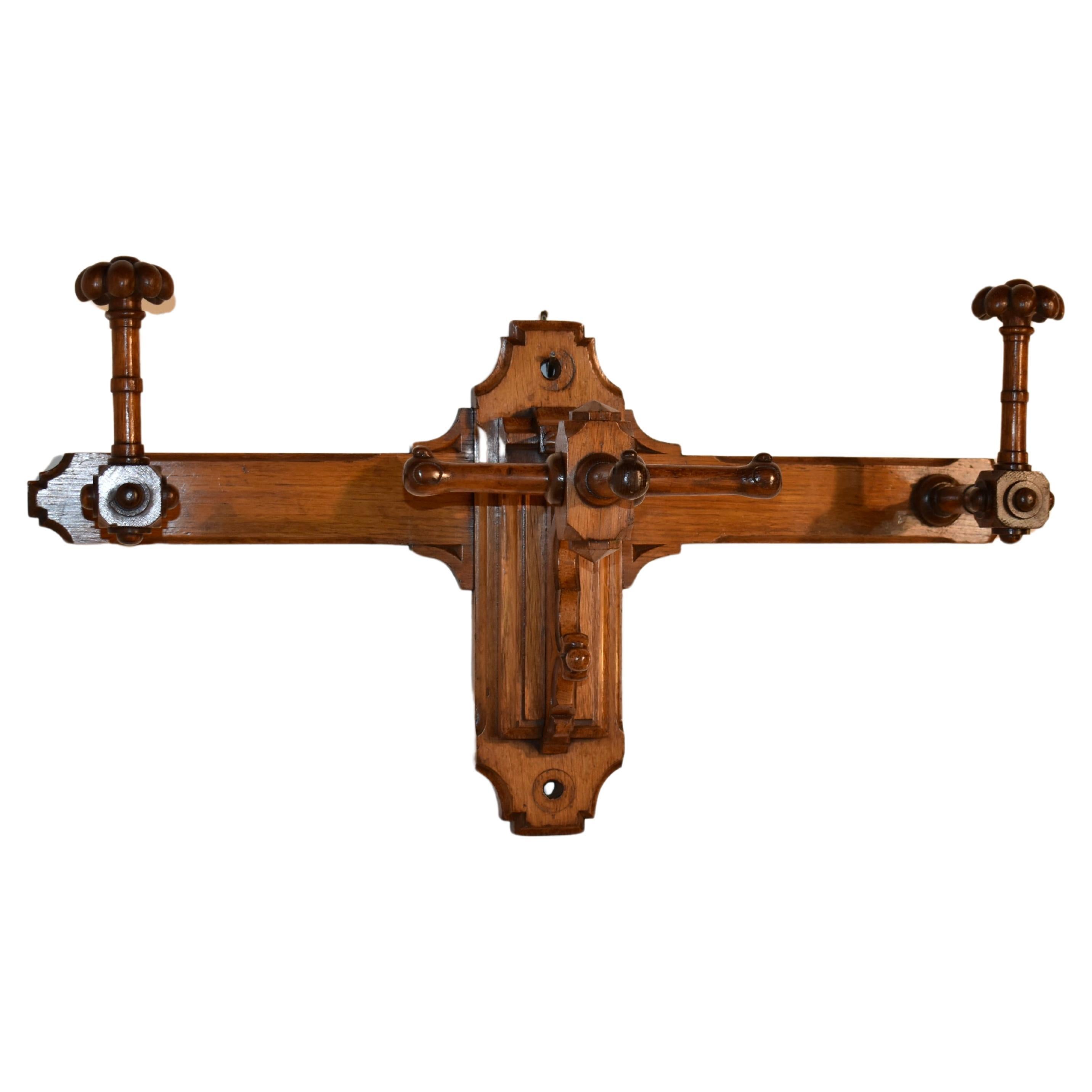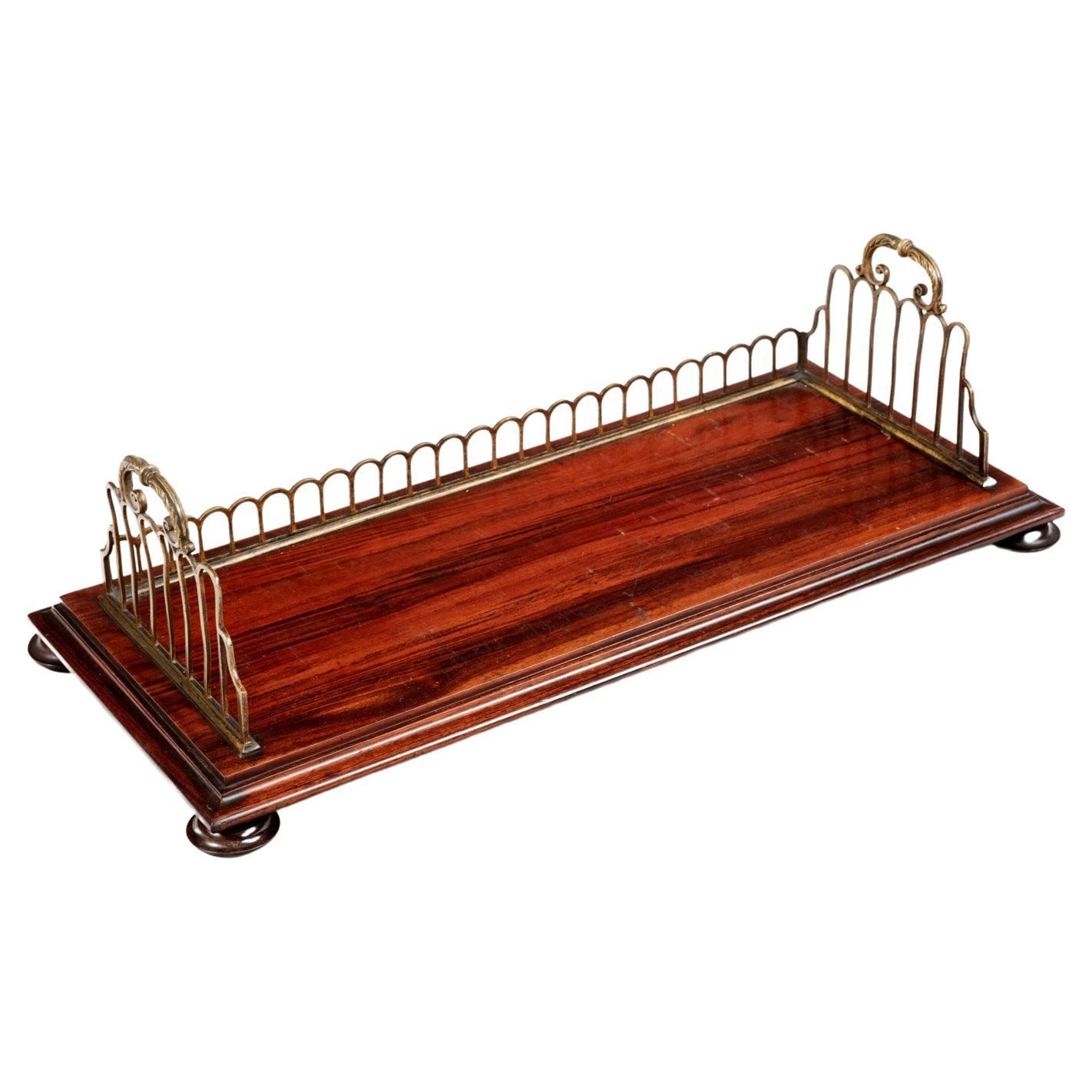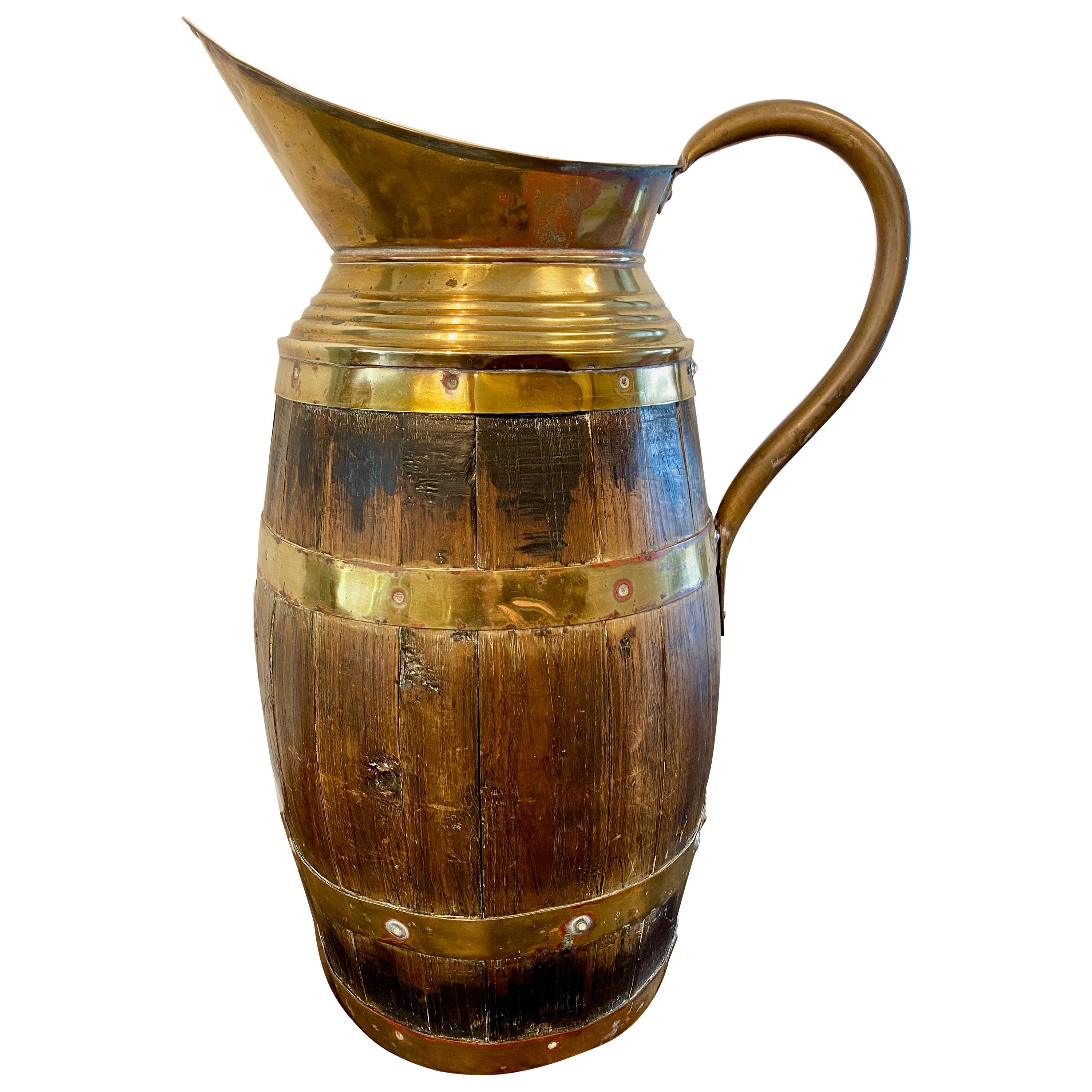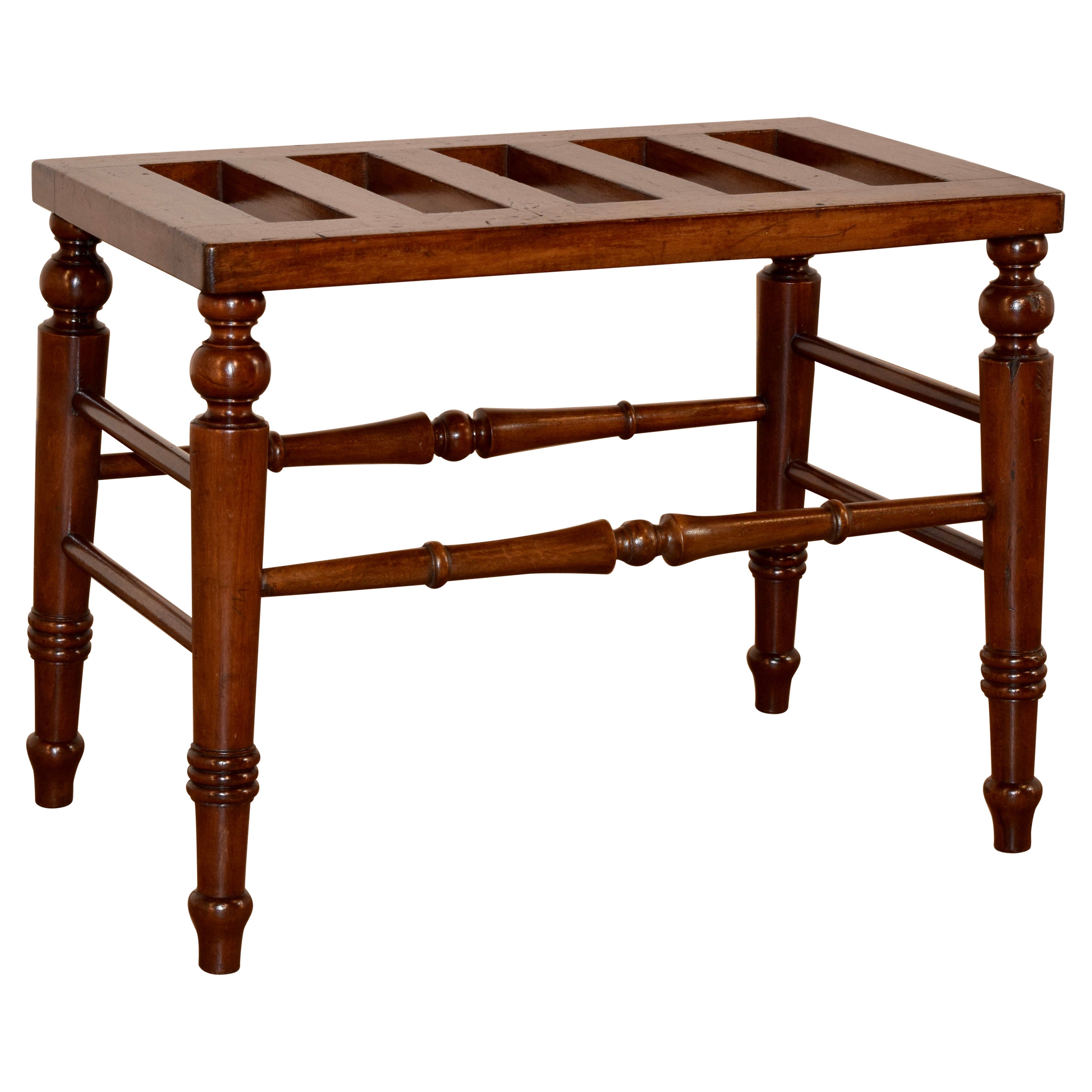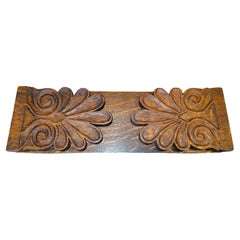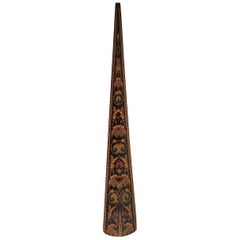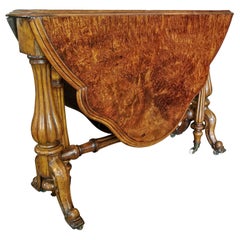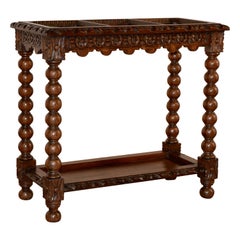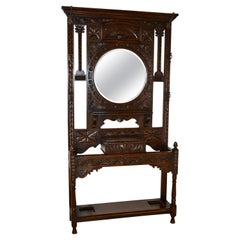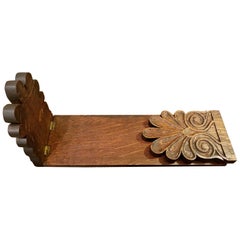
19th Century English Oak Book Slide
View Similar Items
Want more images or videos?
Request additional images or videos from the seller
1 of 8
19th Century English Oak Book Slide
About the Item
- Dimensions:Height: 8.75 in (22.23 cm)Width: 19.5 in (49.53 cm)Depth: 6 in (15.24 cm)
- Style:High Victorian (Of the Period)
- Materials and Techniques:
- Place of Origin:
- Period:
- Date of Manufacture:1880
- Condition:Wear consistent with age and use. Very good condition.
- Seller Location:Dallas, TX
- Reference Number:1stDibs: LU3978112695871
About the Seller
4.9
Gold Seller
These expertly vetted sellers are highly rated and consistently exceed customer expectations.
Established in 2015
1stDibs seller since 2018
349 sales on 1stDibs
More From This SellerView All
- British Tiger Oak Renaissance Revival Book Slide or StandLocated in Dallas, TXPresenting a lovely Early 20C British Tiger Oak Renaissance Revival Book Slide. Made in England circa 1900-20 as part of the Renaissance Revival trend of that period. PRESENTING A ...Category
Antique Late 19th Century English Renaissance Revival Magazine Racks and...
MaterialsOak
- Rare 19th Century English Tunbridgeware Hair Pin or SlideLocated in Dallas, TXPresenting an absolutely gorgeous and extremely unique and rare 19th century British Tunbridgeware hair pin/bobbin or slide. This slide is unlike any of it’s kind we have seen before…. it is a very rare survivor ! From circa 1860–1880. Made of walnut with gorgeous marquetry inlay on the entirety of the front with classic Tunbridgeware micro-mosaic all over the front. The rear is walnut. The marquetry inlay appears to be various different woods, namely, maple, walnut and satinwood. Would have been worn in a Lady’s hair bun with the micro-mosaic facing forward. This would have belonged to a very elegant lady in the mid to late 19th century. Tunbridge ware is a form of decoratively inlaid woodwork, typically in the form of boxes, that is characteristic of Tonbridge and the spa town of Royal Tunbridge Wells in Kent in the 18th and 19th centuries. The decoration typically consists of a mosaic of many very small pieces of different coloured woods that form a pictorial vignette. Shaped rods and slivers of wood were first carefully glued together, then cut into many thin slices of identical pictorial veneer with a fine saw. Elaborately striped and feathered bandings for framing were pre-formed in a similar fashion. There is a collection of Tunbridge ware in the Tunbridge Wells Museum and Art Gallery in Tunbridge Wells. The famous makers of Tunbridge ware were in the Tunbridge Wells area of Kent; their most notable work was from circa 1830-1900. Early makers of Tunbridge ware, in Tunbridge Wells in the mid-18th century, were the Burrows family, and Fenner and Co. In the 19th century, around 1830, James Burrows invented a technique of creating mosaics from wooden tesserae. Henry Hollamby, apprenticed to the Burrows family, set up on his own in 1842 and became an important manufacturer of Tunbridge ware, employing about 40 people. Edmund Nye (1797–1863) and his father took over the Fenner company when William Fenner retired in 1840, after 30 years in partnership with him. Thomas Barton (1819–1903), previously apprenticed at the Wise factory, joined the Nyes in 1836, and worked as Nye’s designer; he took over the business in 1863 and continued there until his death. In Tonbridge (near to Tunbridge Wells), George Wise (1703–1779) is known to have had a business in 1746. It continued with his son Thomas, and Thomas’s nephew George (1779–1869), who took over in 1806. In its early years the company made articles such as workboxes and tea caddies with prints of popular views; later items had pictures created from mosaics. Their workshop in Tonbridge, Wise’s Tunbridge Ware Manufactory, was next to the Big Bridge over the Medway; the building was demolished in 1886 to widen the approach to the bridge. Tunbridge ware became popular with visitors to the spa town of Tunbridge Wells, who bought them as souvenirs and gifts. Articles included cribbage boards, paperweights, writing slopes, snuffboxes and glove boxes. At the Great Exhibition of 1851, Tunbridge ware by Edmund Nye, Robert Russell and Henry Hollamby was shown; Edmund Nye received a commendation from the judges for his work. He exhibited a table depicting a mosaic of a ship at sea; 110,800 tesserae were used in making the picture. The manufacturers of Tunbridge ware were cottage industries, and they were no more than nine in Tunbridge Wells and one in Tonbridge. The number declined in the 1880s; competent craftsmen were hard to find, and public tastes changed. After the death of Thomas Barton in 1903 the only surviving firm was Boyce, Brown and Kemp, which closed in 1927. Marquetry was an old technique which was continued by Nye and Barton to create images such as birds or butterflies. ‘Green Oak’ as caused by the fungus Chlorociboria aeruginascens. Stickware and half-square mosaic was invented by James Burrows in about 1830: a bunch of wooden sticks of different colours, each having triangular or diamond-shaped cross section, were tightly glued together; in the case of stickware, the resulting block was dried, then turned to form an article such as the base of a pincushion. For half-square mosaic, thin slices were taken from the composite block, and applied to a surface.[1][2][4] Tesselated mosaic, was a development by James Burrows of half-square mosaic; it was adopted by George Wise and Edmund Nye. Minute tesserae were used to form a wide variety of geometric and pictorial designs. Many sorts of wood were used for the various colours; about 40 were in regular use. Only natural colors were used; green was provided by “green oak”, produced by the action of fungus on fallen oak. Designs for articles were often taken from designs of Berlin wool work.Category
Antique Late 19th Century English High Victorian Collectible Jewelry
MaterialsSatinwood, Walnut
- 19th Century English Burl Walnut Sutherland TableLocated in Dallas, TXLate 19th century English drop-leaf table from the Mid-Victorian Era. Made of gorgeous yellowish-brown walnut with a fantastic burl walnut table top. The patina on the top is simply glorious!! The table was made circa 1850-60. It sits on beautifully turned fluted legs with the porcelain and brass casters. Two of the legs swing inwards and outwards to extend the 2 leaves of the table. Fully extended the table has a fabulous curved and indented edge, in an oval shape on both ends. The center column is beautifully turned and fluted. The 2 side columns are again beautifully turned and fluted and end with 2 extending scrolling supports that end in turned bulbous twin feet. This is a high quality item and highly desirable! Antique Sutherland Tables...Category
Antique Mid-19th Century English High Victorian Side Tables
MaterialsWalnut, Burl
- 19th Century Irish Country Squire's Oak Telescopic Dining TableLocated in Dallas, TXFrom circa 1860, five beautifully turned baluster legs on brass castors, beautiful oak patina on top with a high gloss finish. It is very rare to find one of these made of solid oak...Category
Antique Mid-19th Century Irish High Victorian Dining Room Tables
MaterialsOak
- Rare 19th Century English Eclipse Patented Telescopic DeskLocated in Dallas, TXPresenting an exceptionally rare 19th century English eclipse patented telescopic desk. Made of oak in the Rococo style in Great Britain, circa 1880. Fully marked as “The Eclipse” ...Category
Antique Late 19th Century English Late Victorian Desks
MaterialsBrass
- 19th Century British Tunbridge Ware Lap DeskBy Tunbridge WareLocated in Dallas, TXPresenting an absolutely gorgeous and extremely unique and rare 19th Century British Tunbridge ware lap desk. This lap desk is unlike any of it’s kind we have seen before. From cir...Category
Antique Mid-19th Century English High Victorian Decorative Boxes
MaterialsMaple, Walnut, Satinwood, Ebony, Wood
You May Also Like
- 19th Century English Oak Stick StandLocated in High Point, NCExtraordinary 19th century stick stand from England made from oak. The top has beveled and hand carved decoration around the edges, and has three separated sections for storing walki...Category
Antique Late 19th Century English Victorian Umbrella Stands
MaterialsOak
- 19th Century English Oak Stick StandLocated in High Point, NC19th century oak barrel shaped stick stand with hand applied brass straps. Lovely color and shape.Category
Antique 19th Century English Victorian Umbrella Stands
MaterialsBrass
- 19th Century English Oak Hall StandLocated in High Point, NC19th century oak hall stand from England. The top has a lovely crown molding, over a hand carved central panel, flanked by carved sides, which have three brass hooks on each side fo...Category
Antique 19th Century English Victorian Coat Racks and Stands
MaterialsBrass
- 19th Century English Oak Umbrella StandLocated in High Point, NC19th century oak umbrella or cane stand from England. The back has lovely serpentine and scalloped details, which give it a lovely shape and will lend itself to a beautiful silhouet...Category
Antique 19th Century English Victorian Umbrella Stands
MaterialsOak
- English 19th Century Regency Period Book CanterburyLocated in London, GBConstructed in goncalo alves, with four divisions, the top rail of arc-en arbalette form, with turned dividers; the central support in the form of a stylised palm tree trunk; a singl...Category
Antique 19th Century British Regency Magazine Racks and Stands
MaterialsBrass
- French 19th Century Solid Oak Book StandLocated in Baton Rouge, LAA wonderful music or book stand, made in France towards the end of the 19th century. The uncomplicated design is a testament to turned wood, with its post made of solid oak, which ha...Category
Antique 19th Century French French Provincial Music Stands
MaterialsOak
Recently Viewed
View AllMore Ways To Browse
Antique Book Rack
Antique Book Rack Antiques
Antique Victorian Book Stand
Antique Book Slide
Antique Oak Magazine Rack
Mid Century Black Magazine
Magazine Rack Brass Brass
Magazine Holders
Vintage Magazine Stand
Vintage Brass Magazine Rack
Antique Magazine Stands
Italian Rack Magazine
Italy Magazine Rack
Antique Magazine Stand
Magazine Holder Rack
Book Stand Antique
Antique Book Stand
Antique Book Stands
